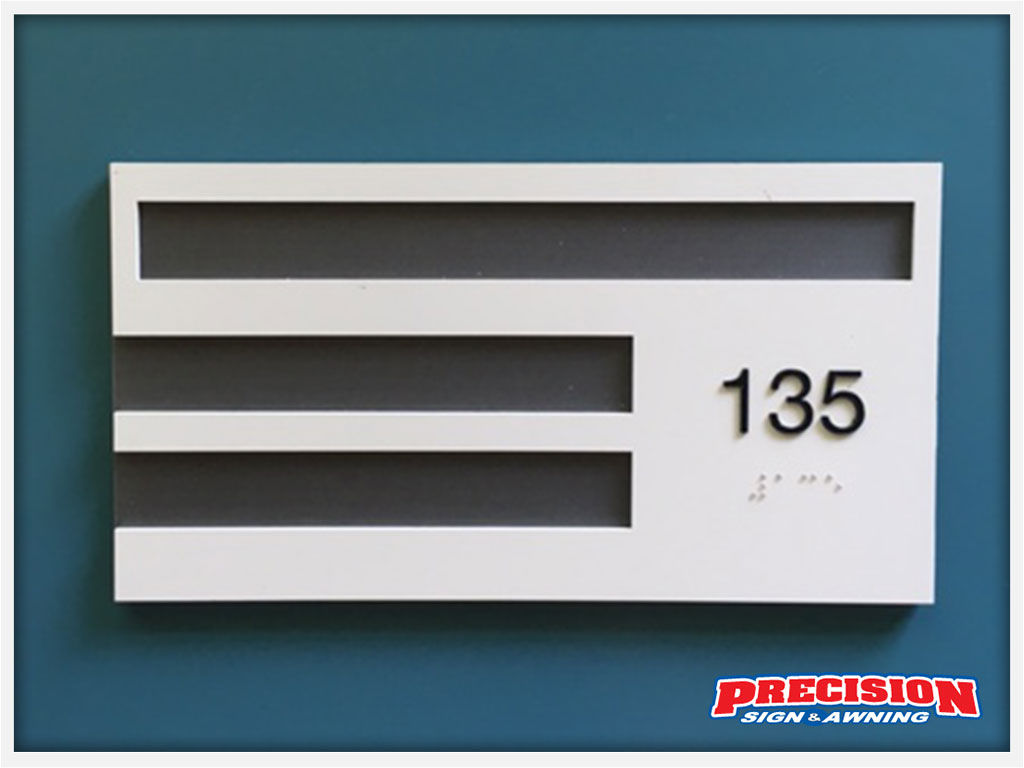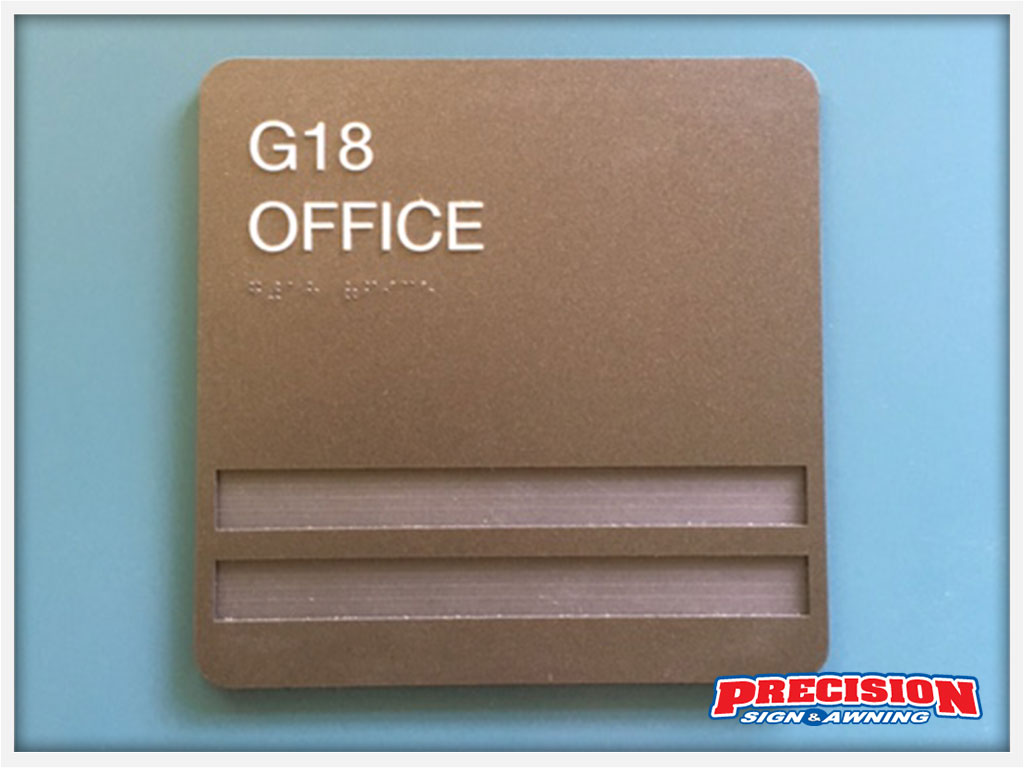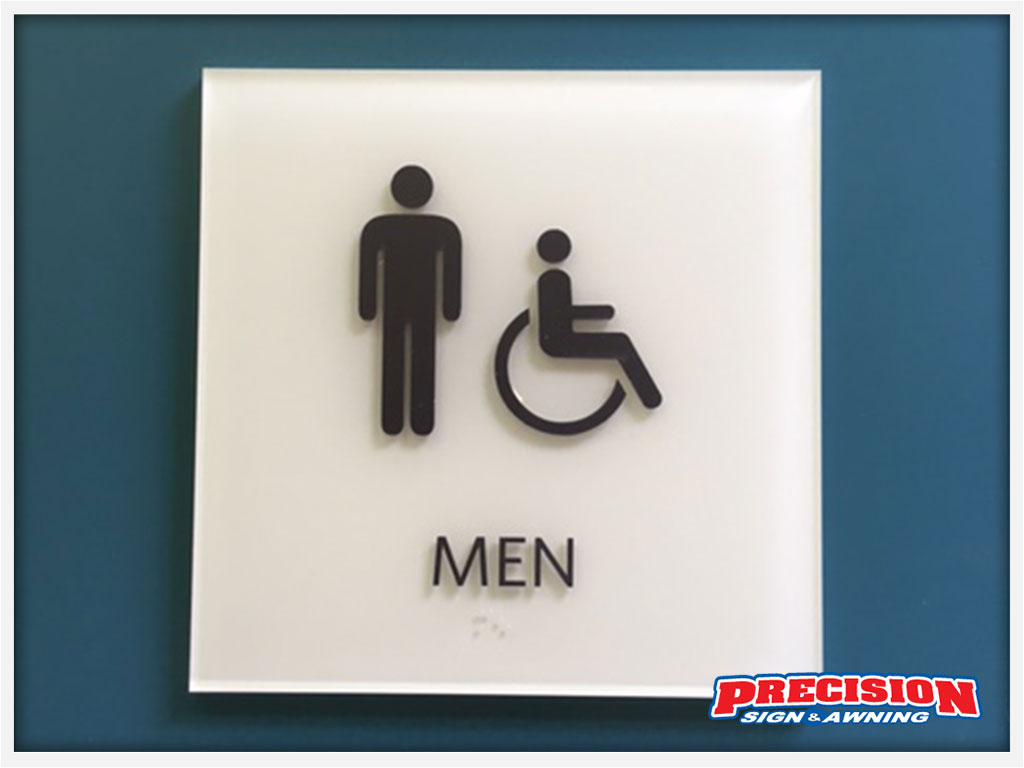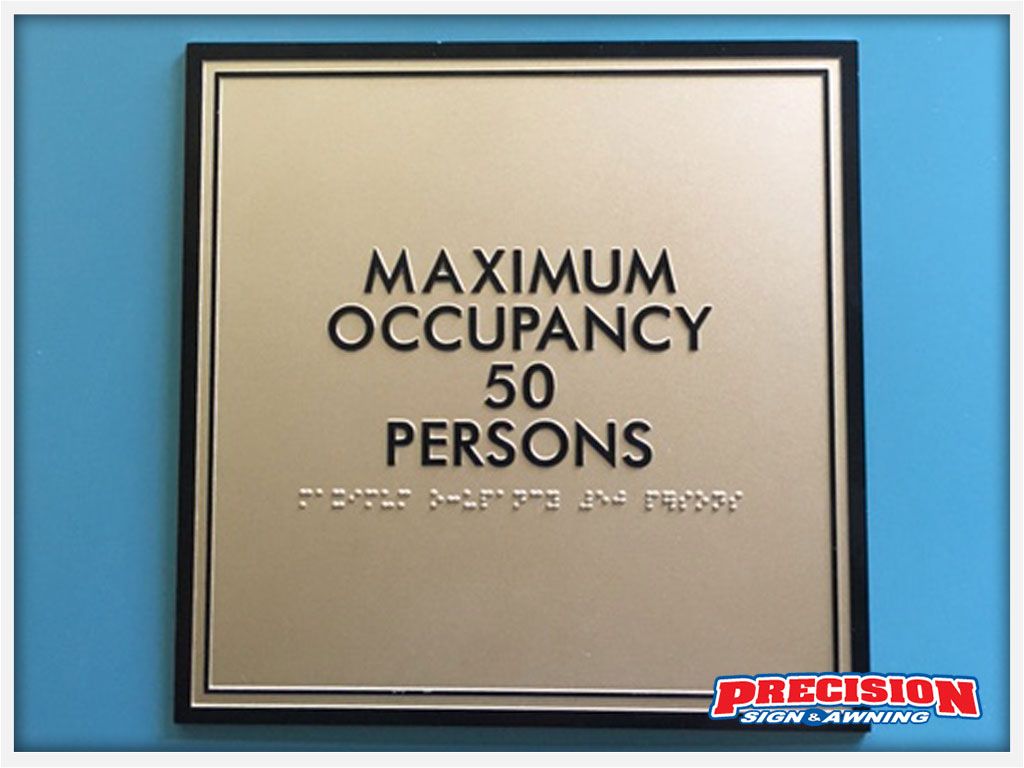ADA Signage Requirements
When the Americans with Disabilities Act, also called the ADA, passed in 1990, it offered far reaching requirements that businesses had to comply with to ensure that those with disabilities had the same access and opportunities as everyone else.
The ADA covers things like architecture designs and renovations, employment opportunities, and access to accommodations. Also included in the act were regulations for signs – such as braille signs.
Any sign that provides architectural information, such as the location of exits or directories are subject to these requirements. Essentially if a sign is not specifically for marketing, advertising, or branding, or that are meant to be temporary, that sign will need to comply with the ADA signage requirements.
Contact Melissa
Owner & President
Signage requirements include numerous details, from incorporating Braille to the kind of typeface (better known as fonts) to reflection and background of the sign. While it is easy to assume that the addition of Braille to signs in certain types of buildings is the greatest need, there are many disabilities that the ADA signage requirements cover. That means that signs must meet both tactile and visual standards.
ADA Signage Standards and Compliance
The basis for ADA signage standards is form ANSI A117.1. Signs that will reside outside of a building must meet different ADA signage standards than the signs located within buildings. There are also different regulations for public buildings. Facilities that belong to local and state government agencies must comply with Title II, while federal buildings must meet the standards provided in Title III.
The regulations and standards for compliance were most recently revised in 2010 by the 2010 ADA Standards for Accessible Design under Chapter 7, Communication Elements and Features, Section 703, Signs. The only element considered more important in terms of communication is regulations on the fire alarm systems, which must have both visual and auditory aspects.
Section 703 Requirements
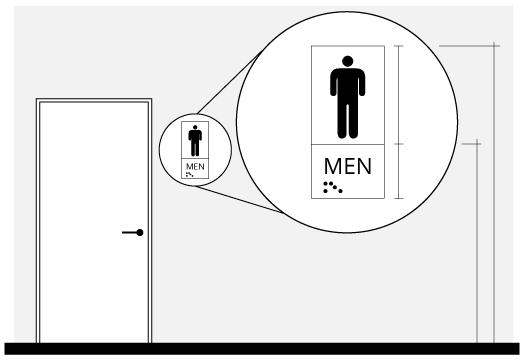
- Raised characters – depth, case, style, proportions, height, stroke (lettering) thickness, and spacing (character and line)
- Braille – dimensions, capitalization, and positioning to corresponding text
- Sign height and location – above the floor/ground and in relation to the door described by the sign
- Visual characters – finish and contrast to the sign’s background, case, style, proportions, height, stroke thickness, and spacing (character and line)
- Pictograms – field, finish and contrast to the sign’s background, and text descriptors
- Symbols of accessibility – finish and contrast to the background, use of internationally recognized symbols, volume control (when sign describes a communication device such as a phone), and available assistive listening systems
There are nearly 10 pages dedicated to signs and the standards that must be met to be compliant. If you need to order signs that must be ADA compliant, make sure to let your sign maker know this from the beginning.
Sign manufactures knowledgeable on ADA signs can walk you through all of the rules and regulations because there are exceptions for some types of signs and buildings, and not all of the standards may apply to the different uses for your sign.
For Example
- A sign used outside of a bathroom in a state facility will need to follow most of the nearly 10 pages of the standards.
- A sign outside of a building indicating the entrance will need to follow some, but not all of the standards.
ADA Braille Signs Requirements
Section 703.3 specifically covers the Braille requirements, but all signs that include Braille must also meet specifications in 703.4 (Installation Height and Location). The following are the requirements for Braille dimensions.

The dot base diameter must be between 0.059 to 0.063 inches (1.5 to 1.6 mm).

The distance between two dots in the same cell is 0.090 to 0.100 inches (2.3 to 2.5 mm) when measured from the center of each dot.

The distance between corresponding dots in adjacent cells is 0.241 to 0.300 inches (6.1 to 7.6 mm) when measured from the center of each dot.

The dot height must be between 0.025 and 0.037 inches (0.6 to 0.9 mm).

The distance between corresponding dots from one cell directly below another dot must be between 0.395 and 0.400 inches (10 to 10.2 mm) when measured from the center of each dot.
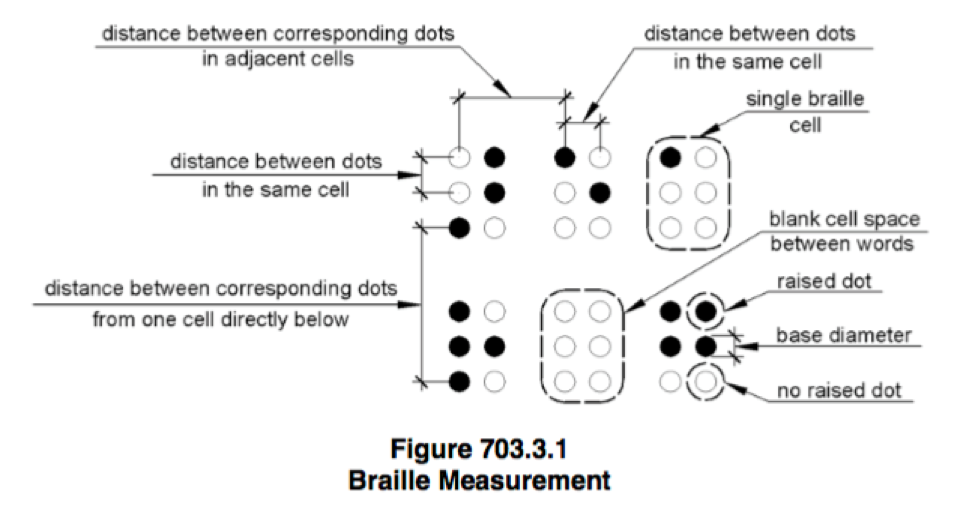
The image to the left is from the ADA and provides a more succinct way of representing these specifications.
ADA signs must be easily accessible so that someone with a visual impairment can quickly find the sign. All signs must be located 48 inches (1,220 mm) above the floor or ground, with the exception of elevators. The regulations on the location of signs in relation to doors are incredibly detailed, and you will need to make sure you fully understand what kind of door the sign will describe.
The ADA Central website provides some very detailed instructions that can help you ensure that your signs comply with the range of possibilities for door type, wall spacing, and sign height.
Photopolymer ADA Sign
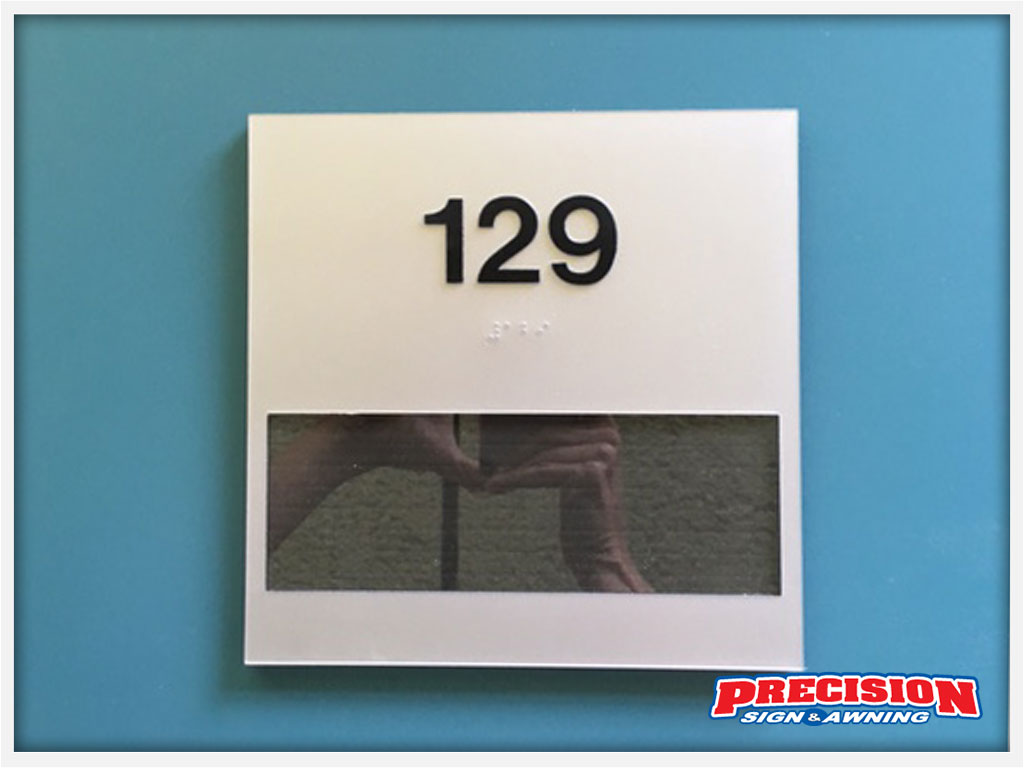
The most popular material for ADA signs is photopolymer. This is because it is more versatile than other materials, so that you can create a different look. If you need to add raised letters, it is much easier to accomplish a professional look with a photopolymer sign.
Photopolymer is very durable so that the lettering remains compliant for much longer than other materials. From weather to vandalism, photopolymer signs can take a good bit of abuse without any of the lettering rubbing off.
Using photopolymer for your ADA signs means that you won’t have to rework the signs as often to keep them compliant.
3D ADA Signage
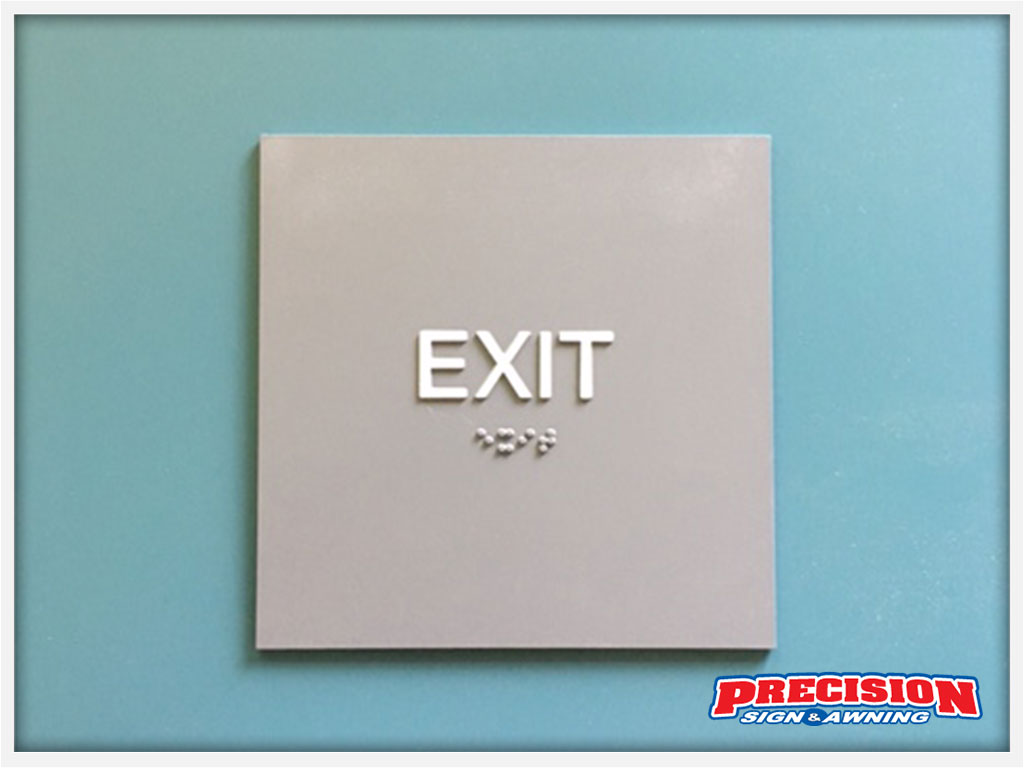
One of the most creative ways to ensure that your signs comply with the ADA requirements without looking exactly like all of the other signs is to have them printed in 3D.
An increasing number of buildings have 3D ADA signs. They have more personality than the traditional bland, single color rectangular signs that people have grown accustomed to seeing. A 3D printer can easily incorporate the Braille and raised characters with their strict requirements without having to sacrifice the appearance of the sign.
By using 3D printers, designers are able to spend more time on the look of a sign instead of getting bogged down in measurements. It also is easier to replicate a design. As long as you save the information used for the print, you will able to reprint the sign at a later time.
Conclusion
The requirements for ADA signs can appear to be very limiting; most companies have enough trouble just ensuring their signs comply with the ADA standards. However, given materials (like photopolymer) and advanced technology (like 3D printers), compliance with ADA signage requirements is getting increasingly easier.
Being creative with the implementation of the standards not only helps those who are disabled, it makes your business or agency more memorable to customers, patients, and visitors.
Get A Quote
(No hard sale tactics and No obligation)
Do you have a question about your project? Please contact us for our advice, opinion, or a quote.
Contact Melissa
Owner & President

